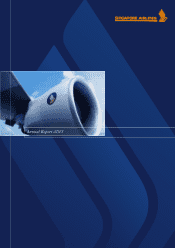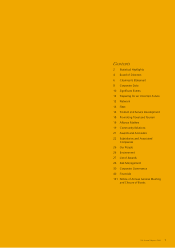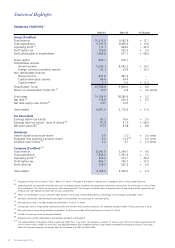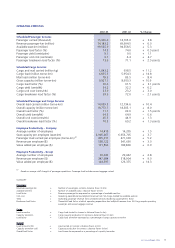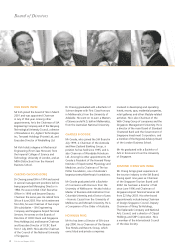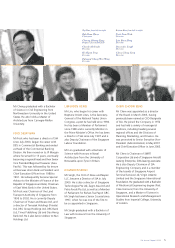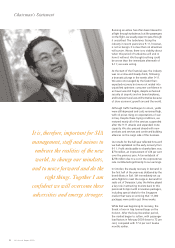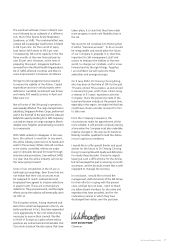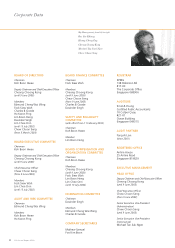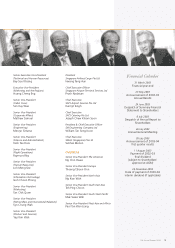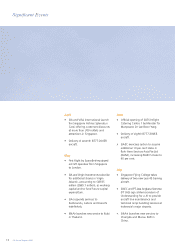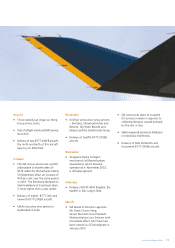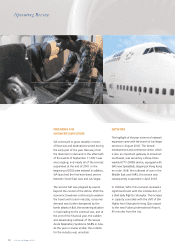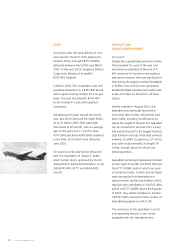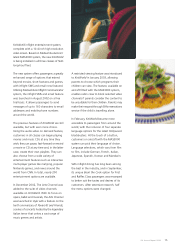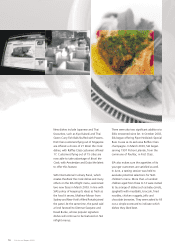Singapore Airlines 2003 Annual Report Download - page 8
Download and view the complete annual report
Please find page 8 of the 2003 Singapore Airlines annual report below. You can navigate through the pages in the report by either clicking on the pages listed below, or by using the keyword search tool below to find specific information within the annual report.
It is, therefore, important for SIA
management, staff and unions to
embrace the realities of the new
world, to change our mindsets,
and to move forward and do the
right things. Together I am
confident we will overcome these
adversities and emerge stronger.
Running an airline has often been likened to
a flight through turbulence, but like passengers
on the flight, we usually expect to pass through
it unscathed. The turbulence facing the
industry in recent years since 9-11, however,
is not so benign. It is clear that not all airlines
will survive. Worse, there is no visibility about
when this period of turbulence will end or
how it will end. We thought nothing could
be worse than the immediate aftermath of
9-11; we were wrong.
At the start of the financial year, the industry
was on a slow and steady climb, following
a dramatic plunge in the weeks after 9-11.
We were encouraged by the faster-than-
expected recovery but were not misled into
unjustified optimism: consumer confidence in
air travel was still fragile, despite enhanced
security at airports and on board airplanes,
and business travel was still tentative because
of slow economic growth around the world.
Although traffic had begun to return, yields
were still depressed and costs remained high,
with oil prices rising on expectations of war
in Iraq. Despite these trying conditions, we
restored nearly all of the services suspended
after the 9-11 attacks and expanded route
capacity. We also pressed ahead with new
products and services and continued building
alliances on the cargo side of the business.
Our results for the half-year reflected how well
we had capitalized on the early recovery from
9-11. Profit attributable to shareholders was
$774 million, an improvement of 474 per cent
over the previous year. A tax writeback of
$278 million due to a cut in the corporate tax
rate contributed significantly to our earnings.
In October, the steady recovery in demand in
the first half of the year was shattered by the
bomb blasts in Bali. SIA immediately set up
extra flights to meet the surge in demand for
seats out of Denpasar. Later, the Airline played
a key role in attracting tourists back to this
perennial hotspot with innovative packages,
including special deals for the Singapore
market that were so enticing that 11,000
packages were sold in just three weeks.
While Bali was beginning its recovery, the
threat of war in Iraq loomed large on the
horizon. After the busy December period,
the market began to soften, with passenger
load factors in February 2003 down to 72 per
cent, compared with 77.6 per cent twelve
months earlier.
SIA Annual Report 02/036
Chairman’s Statement

